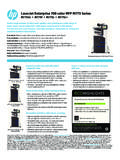Transcription of Insecticide Flupyradifurone - Bayer
1 Insecticide Flupyradifurone Technical Information Insecticide Flupyradifurone Contents 1. General information 4. 2. Identity of the active substance 6. 3. Physico-chemical properties 7. 4. Behaviour in the environment 8. 5. Effects on organisms in the environment 12. 6. Toxicological properties of the technical active substance/formulation 18. 7. Maximum Residue Limits 21. 8. Special instructions/advice 22. 9. Formulations 23. 10. Recommendations for use 24. 11. Product compatibility 29. 12. Analytical methods 30. 13. References 30. 14. Disclaimer 31. Technical Information Flupyradifurone Technical Information 4. 1. General information SivantoTM (active substance Flupyradifurone ) is a new Insecticide with a distinct spectrum of activity belonging to Bayer CropScience s own chemical class of Butenolides. Sivanto will be developed, registered and sold throughout the world in all major climatic zones allowing agriculture, the key markets being Brazil, USA, Europe, Ghana, India, and China.
2 The basic formulations are currently a 200 SL for foliar and drench/drip use and a 480 FS. for seed treatment. Mixtures with other active substances are under development. When compared to other insecticides, Sivanto exhibits a very promising safety profile. Crops and Pests Sivanto is intended to be used as an Insecticide in agriculture on a wide range of crops such as vegetables, fruits, grapes, date palm, coffee and cocoa as foliar spray or soil drench, and as a seed treatment product for broad acre crops, soybean. Sivanto is a systemic Insecticide , flexible in application and mainly intended for sucking pest control such as aphids, hoppers and whiteflies. Spectrum extension to mealybugs, leafminer, soft scales, weevils, flea beetles and psyllids is under examination. Sivanto is most effective, when used as a foliar application, as a threshold treatment as well as with water amounts providing good crop coverage.
3 Mode of Action Flupyradifurone , the active substance of Sivanto, interacts with insect nicotinic acetylcholine receptors, a class of neurotransmitter-gated cation channels which are involved in excitatory neurotransmission. These are also the target sites for neonicotinoid insecticides. The com- pound acts as an agonist, , the binding of Flupyradifurone to the receptor protein induces a depolarising ion current and subsequent excitation of the nerve cell. In contrast to natural acetylcholine, Flupyradifurone cannot be inactivated by acetylcholinesterase resulting in a disorder of the nervous system of the insect and subsequent death of the treated insects. Resistance Management Despite having the same mode of action as neonicotinoids, Sivanto can effectively be used for the control of several pests' species which became resistant to commercially available insecticides in this chemical class, because it belongs to a different chemistry.
4 Sivanto is a new tool in resistance management, particularly of whiteflies, jassids, and the damson hop aphid; and it does not exhibit significant cross-resistance to insecticides from other chemical classes. Flupyradifurone Technical Information 5. IPM Considerations and safety to beneficial insects Selectivity towards beneficial insects and predatory mites is a requirement for a modern IPM- compatible product. Side effects of Sivanto on beneficial arthropods have been tested in vari- ous semi-field and field trials. In practical conditions, Sivanto can be considered safe to most beneficial insects (with the exception of predatory bugs), and specifically to pollinators. Sivanto will provide significant benefits to the growers High level of efficacy with pronounced adulticidal effects, and excellent speed of action. Efficacy, IPM fit and versatile application systems allow use during a wide application window, where Sivanto can be directed against adults and larvae, or nymphs.
5 Speed of activity on virus vectors prevents secondary spread of viruses. Protection of new plant growth after seed treatment and soil application. Despite the same MOA as neonicotinoids, Sivanto is an excellent tool for resistance management notably for whiteflies being different in its chemical structure. It is also a good rotation partner for ketoenols (Movento; Oberon). Minimal risk to natural enemies and non-target insects, making it an ideal addition to IPM programs. Extended residual activity due to the complementary effects with natural enemies, in cases in which beneficial insects are present in relevant populations. Flupyradifurone Technical Information 6. 2. Identity of the active substance Name (common name, ISO): Flupyradifurone Development code: BYI 02960. Chemical name (IUPAC): 4-[[(6-chloropyridin-3-yl)methyl](2,2-di fluoroethyl). amino]furan-2(5H)-one Chemical name (CAS): 2(5H)-furanone, 4-[[(6-chloro-3-pyridinyl)methyl].]
6 (2,2-difluoroethyl)amino]- CAS-No.: 951659-40-8. Structural formula: O. O. N. F. Cl N. F. Empirical formula: C12H11Cl F2N2O2. Molecular weight: g/mol Flupyradifurone Technical Information 7. 3. Physico-chemical properties Appearance: Solid (powder). Colour: White to beige Odour: distinct, solvent-like odour (TGAI), weak, not characteristic (pure AI). Melting point: 69 C (pure ), 67,1 C for TGAI at atmospheric pressure Boiling point: no boiling point at atmospheric conditions, pure decomposed at 270 C, TGAI at 245 C. Vapour pressure: x 10-7 Pa (20 C). Density: D = (purity ), D = (TGAI). Solubility (at 20 C): in water: g/L (pH 4, 20 C). in organic solvents: Solvent [g/L]. n-heptane toluene 1,2-dichloromethane > 250. ethyl acetate > 250. methanol > 250. Partition coefficient: log P = (at 25 C and pH 7). Flupyradifurone Technical Information 8. 4. Behaviour in the environment The behaviour of Flupyradifurone in plants, animals, soil and water was investigated by mainly using [pyridinylmethyl-14C] and [furanone-4-14C]-labelled compound.
7 Additionally for selected studies the [ethyl-1-14C] and the [pyridine-2,6-14C]-labels have also been used to fully elucidate the metabolic pathways. In plants: The behaviour and metabolism of Flupyradifurone was investigated in five diverse target crops (tomato, apple, potato, cotton, and rice) for foliar, soil or seed/tuber treatment applications, and in confined rotational crops (Swiss chard, turnip, and wheat) after application of flupyradi- furone onto bare soil and cultivating of succeeding crops at three plant-back intervals. Sivanto 200 SL was used for foliar and soil applications and Sivanto 480 FS for seed/tuber treatments. The plant metabolism studies have shown a reasonably consistent metabolic pro- file across both foliar and soil application, and as well for seed/tuber treatment. The only resi- dues of Flupyradifurone that were consistently observed at significant levels across all target and succeeding crops were the parent compound and difluoroacetic acid (DFA), both of which are specific to the use of Flupyradifurone .
8 On the basis of these results, parent compound and DFA are the proposed constituents (expressed as their sum, in parent equivalents) for the resi- due definition for enforcement for primary (target) plants and rotational crops. For data collection and risk assessment, metabolite BYI 02960-difluoroethyl-amino-furanone (DFEAF) was added to the residue definition since it was a major metabolite found in the Swiss chard RACs in all rotations of the confined rotational crop study and was not observed in the rat ADME studies. For the sake of consistency, the samples of all supervised residue trials on target plants and rotational crops were analysed for these three compounds. In animals: The absorption, distribution, metabolism, and excretion (ADME) of Flupyradifurone have been studied in rats following a single oral or administration of [14C] Flupyradifurone labelled in the furanone ring, the pyridinylmethyl bridge or the difluoroethyl side chain.
9 The biokinetic behavior of Flupyradifurone was characterized by a rapid absorption reaching peak plasma concentrations (Cmax) between 1 and 4 hours after oral administration; in total, >80% of the orally administered dose was absorbed independent of the label position. Plasma level decline in male rats receiving [14C] Flupyradifurone by injection was essentially identical from 8 to 72 hours after administration to that of males that were dosed orally. Excretion of radioactivity was also rapid, being nearly complete within 24-48 hours of admin- istration. The main route of excretion was renal. Female rats had slightly higher renal excre- tion rate than male rats. Comparison of the excretion patterns in male rats from oral vs. experiments shows equivalent urinary excretion levels and rates; as expected, faecal excretion was somewhat higher in rats after oral administration. Flupyradifurone Technical Information 9.
10 As expected for a compound with a log POW of , overall retention in tissues was low. The radioactivity remaining in the tissues from the low dose experiments following oral dosing were negligible. In urine, the parent compound was the predominant component, representing 36 74 % of the administered dose. Metabolites identified in urine were BYI 02960-OH and its conjugates BYI 02960-OH-gluA and BYI 02960-OH-SA, and the cleavage products BYI 02960-hip- puric acid, BYI 02960-des-difluoroethyl, 6-chloronicotinic acid (6-CNA), difluoroacetic acid (DFA), and BYI 02960-difluoroethyl-amino-furanone (DFEAF). Additionally BYI 02960-iso- OH was identified at minor amounts. BYI 02960-OH and parent compound were the major components found in faeces. Additionally, organ metabolism studies with [furanone-4-14C]. and [ethyl-1-14C] Flupyradifurone were conducted. In the study with [furanone-4-14C]flupyradi- furone, parent compound was by far the largest component detected in all samples of plasma, organs and tissues, accounting for more than 72% of the total radioactivity.

